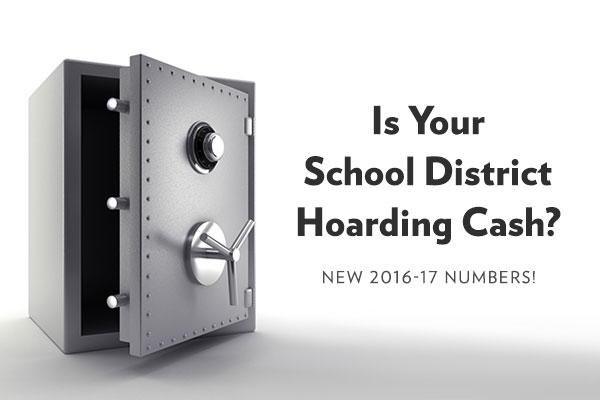Media

Upward Trend in School District Reserve Funds Continues
Pennsylvania’s Department of Education (PDE) released their 2016-17 financial reports less than a week after opponents of education choice for children loudly proclaimed that the sky is falling, among other things. But while PSBA and other anti-choice advocates contend that ever-more funding is the answer to our educational problems, the numbers tell a different story.
Pennsylvania public school districts are required to disclose their reserve holdings each year to the Department of Education. To put the school spending/reserve fund discussion into context, several items from the newly released figures are noteworthy:
- Total school spending in Pennsylvania has eclipsed $30 billion for the first time, up $2 billion from 2015-16
- Average per-pupil expenditure is now $17,735, far above the national average
- School district reserve fund balances are at an all-time high of $4.5 billion, up $139 million from 2015-16
- Nearly half of school districts have fund balances exceeding 20 percent of total spending
Pennsylvania school district fund balances—also known as rainy day funds—have been steadily climbing since 2005-06. In fact, school district reserves have more than doubled in that time. It’s also important to note that these funds are above and beyond any district capital funding – that is funding specifically earmarked by the district for capital improvements.
With a collective balance over $4.5 billion, one wonders why certain districts continually ask for more from their taxpayers. According to Pa. State Auditor General Eugene DePasquale, reserve balances generally should not exceed 20 percent of total spending. “Certainly anything that is above 20 percent, clearly that's where you start to question it.”
Yet 226 of the Commonwealth’s 500 school districts exceeded this threshold in 2016-17.
What’s more, 13 districts with reserves above the 20 percent level have asked for permission to raise property taxes above the state-mandated cap in at least 8 of the last 10 years.
At some point, improving the school system means moving beyond simply throwing money at the problem – to a point of embracing innovation and responsibly allocating resources. Education Savings Accounts offer solutions from both angles. With 21st century parents demanding a more innovative education, Education Savings Accounts offer them the unbundled, customizable experience to fit their child’s unique needs.
Since Education Savings Accounts only consist of a portion of the state funding and leave the district money in place, they naturally lead to significantly higher per-pupil funding. In Harrisburg, for example, per-student funding was $18,846 in 2016-17. If 10 percent of students withdrew from Harrisburg schools and used ESAs, the district would then have $20,306 available to spend per pupil. Education Savings Accounts may also lead to improved student-teacher ratios in the public system.
In a time when many complain of funding disparities, overcrowding, and achievement gaps, Education Savings Accounts offer a win for everyone.